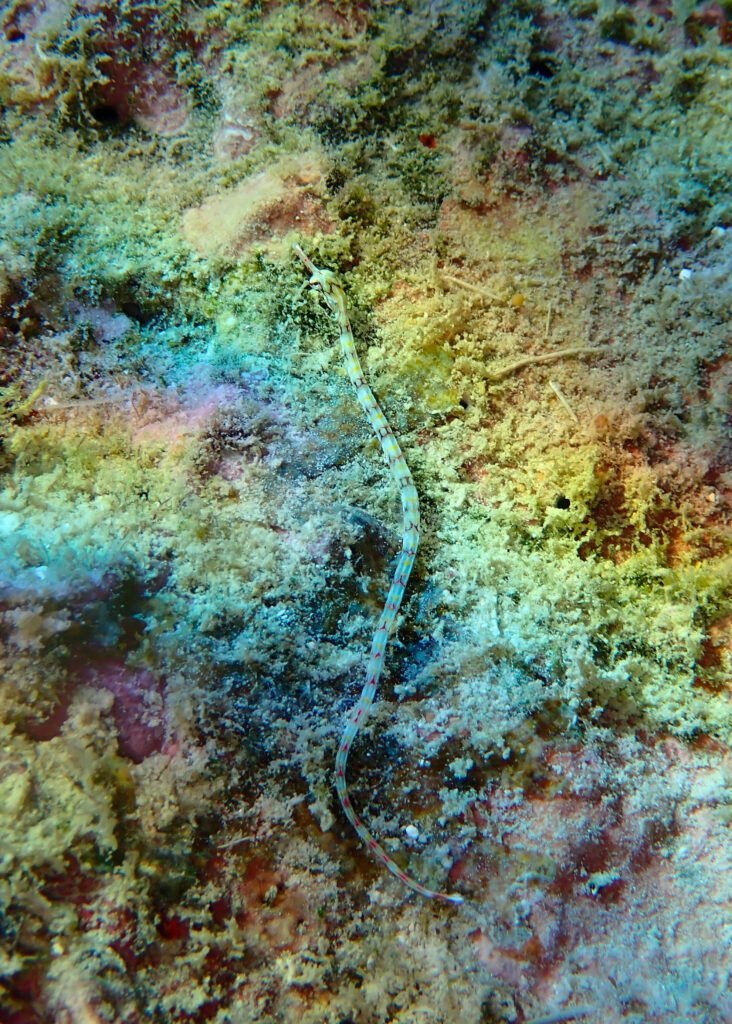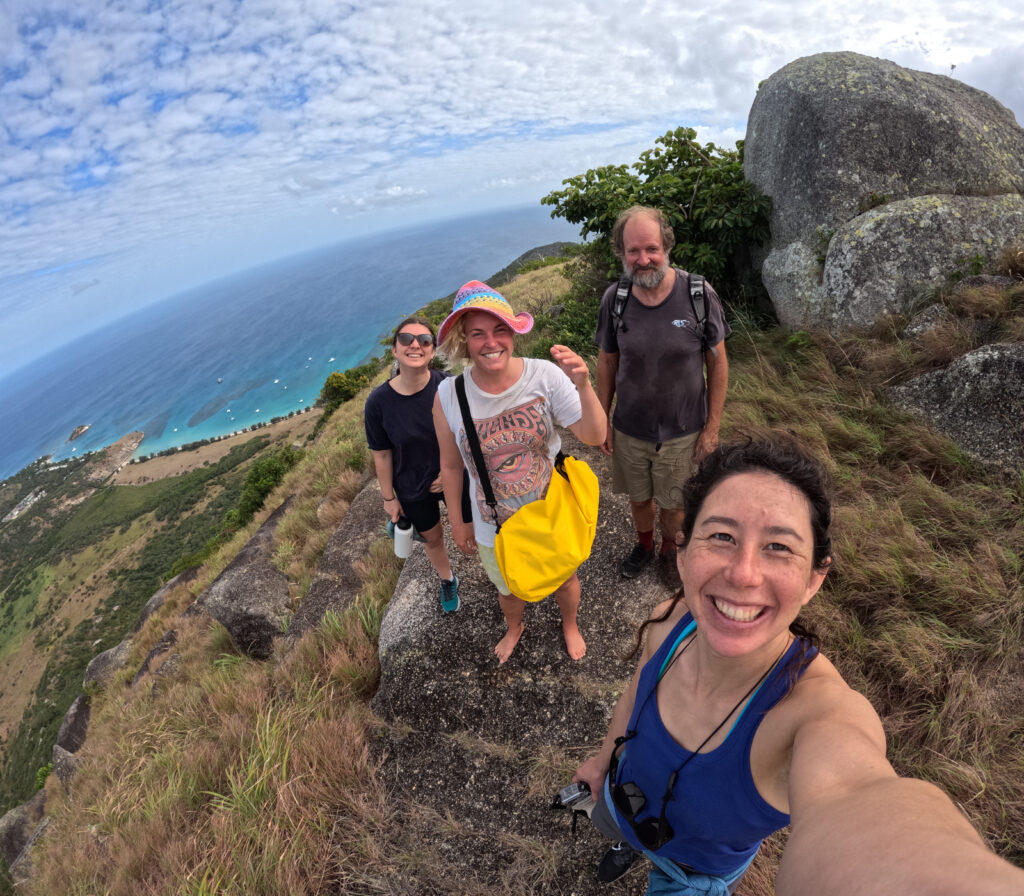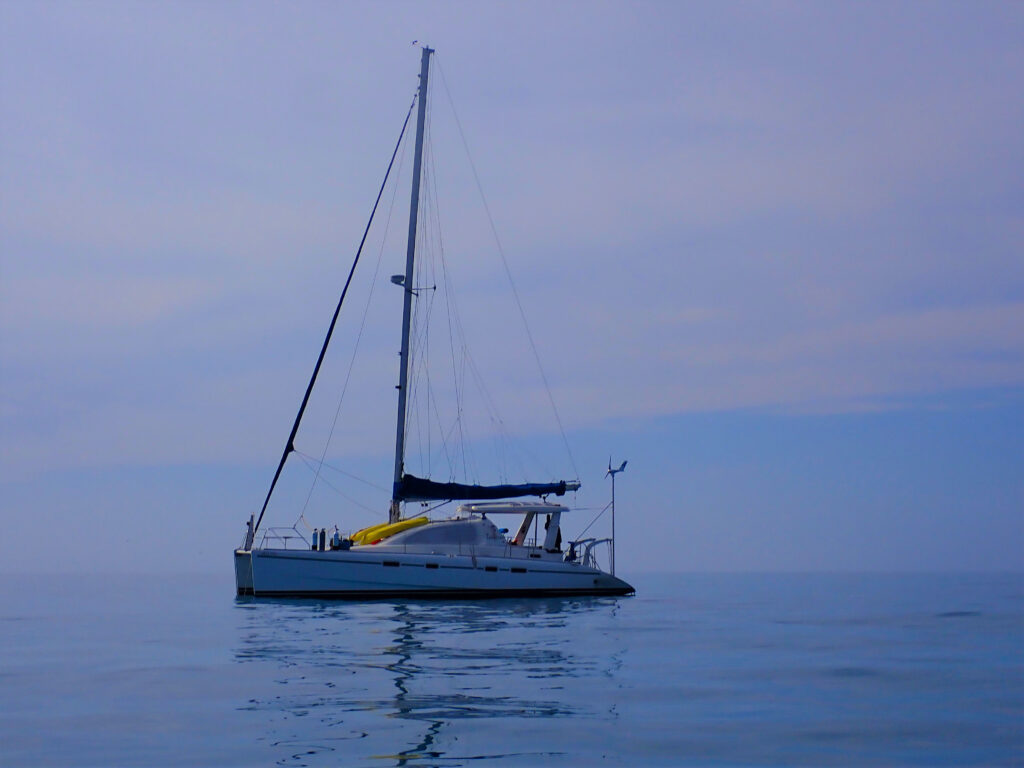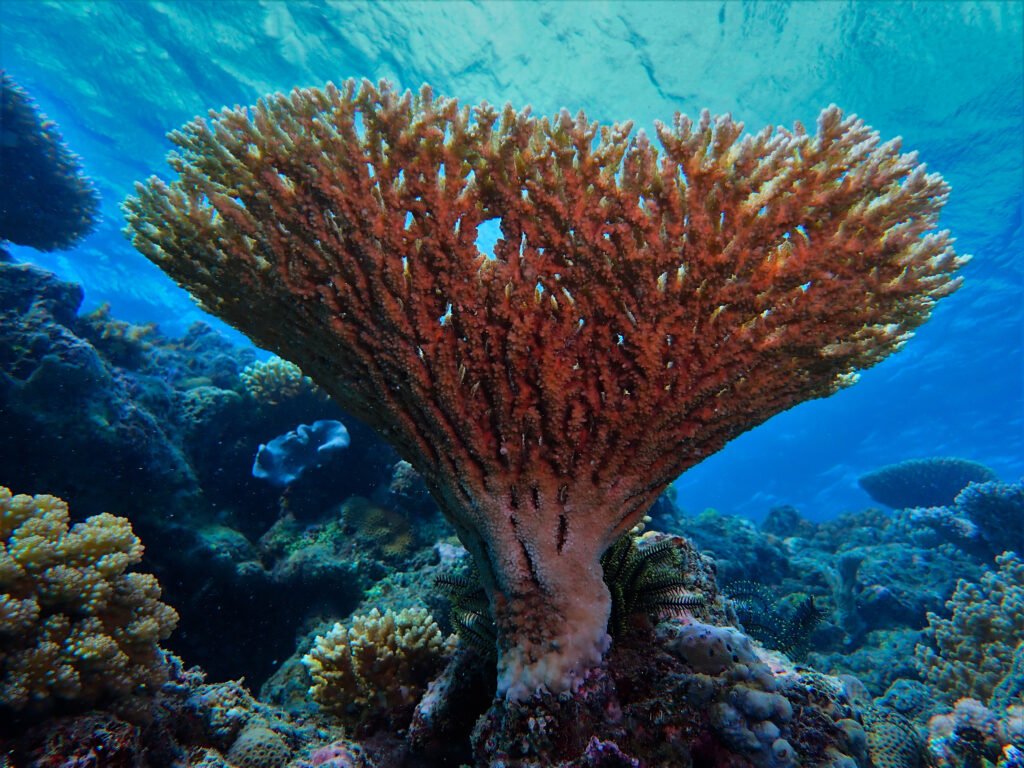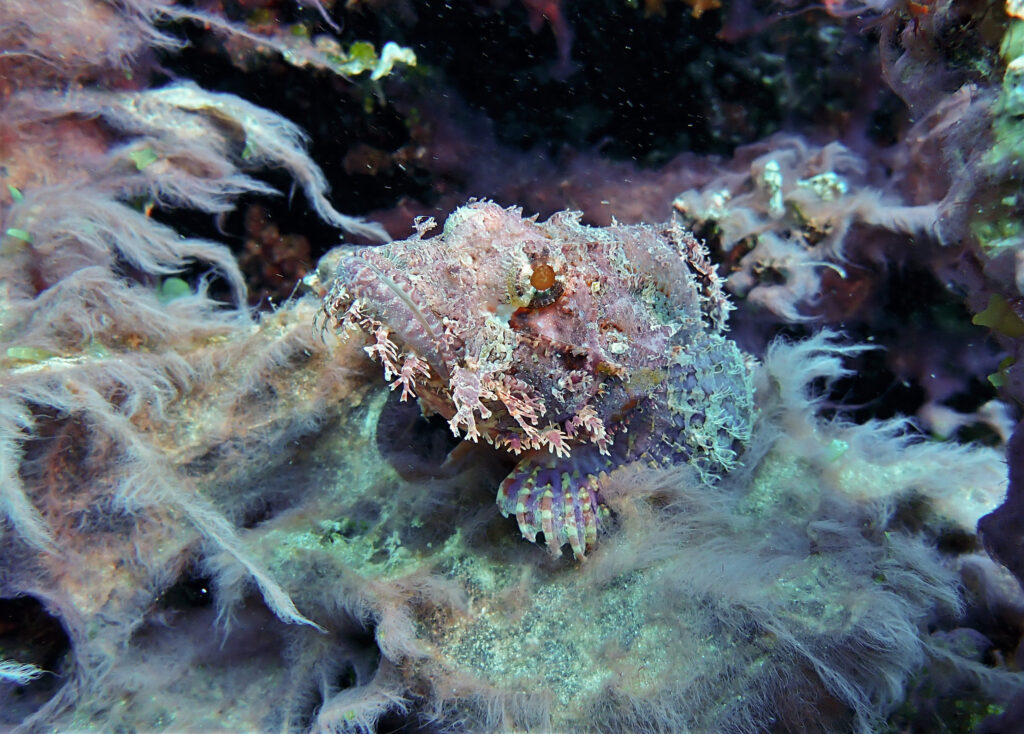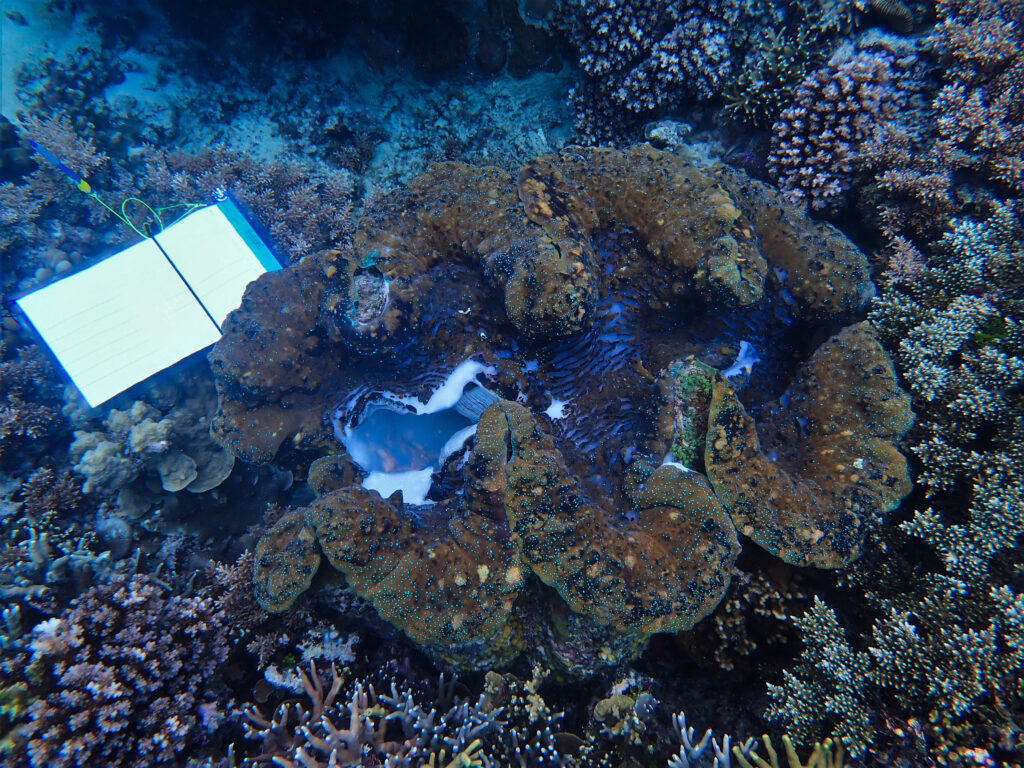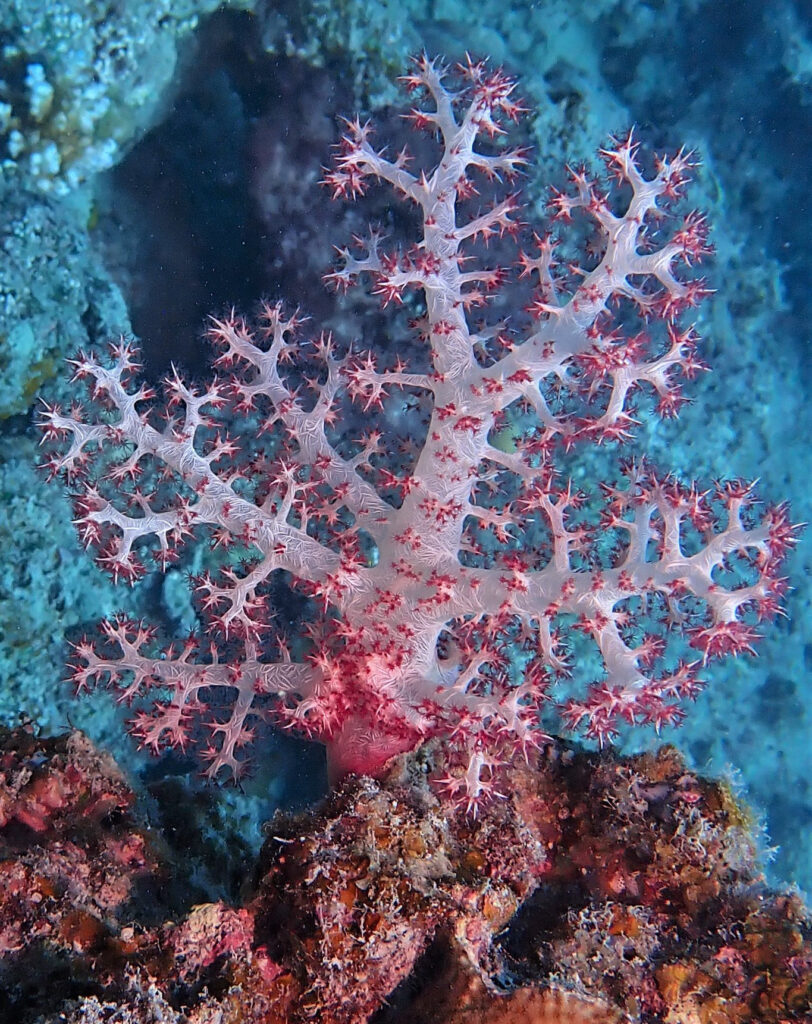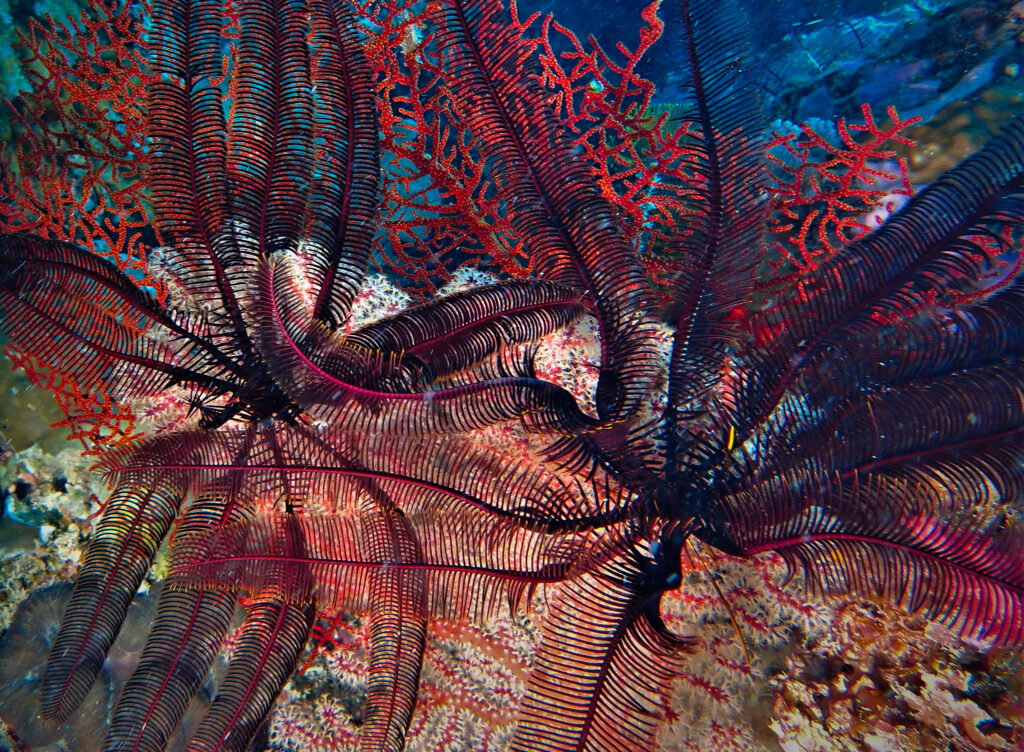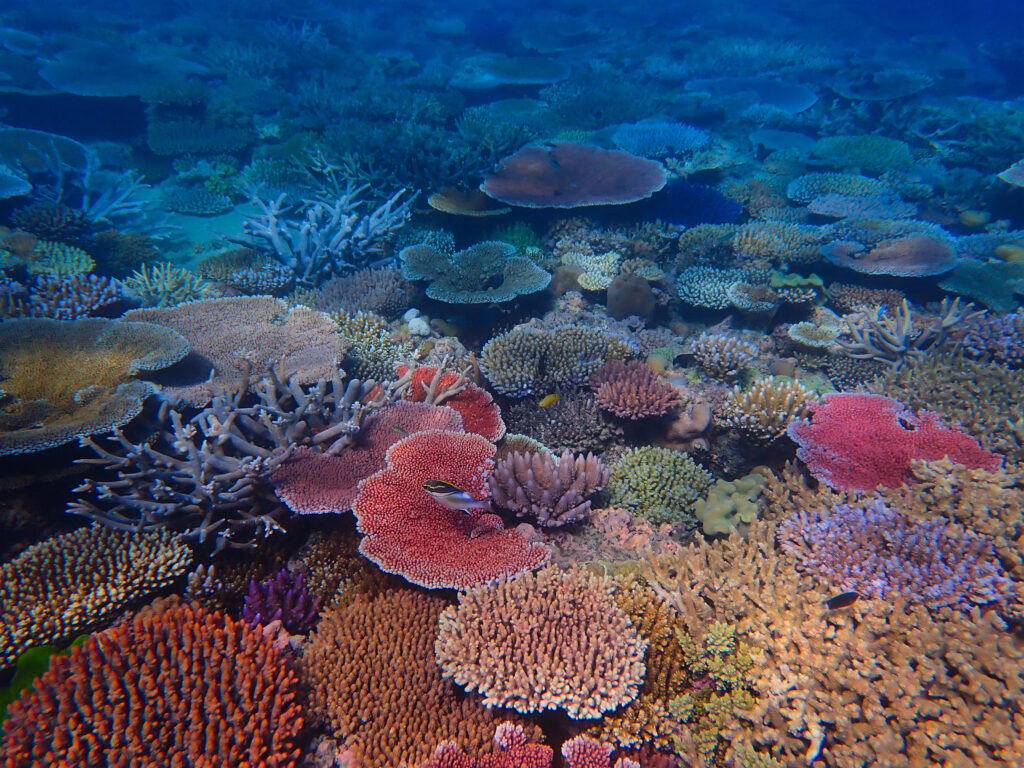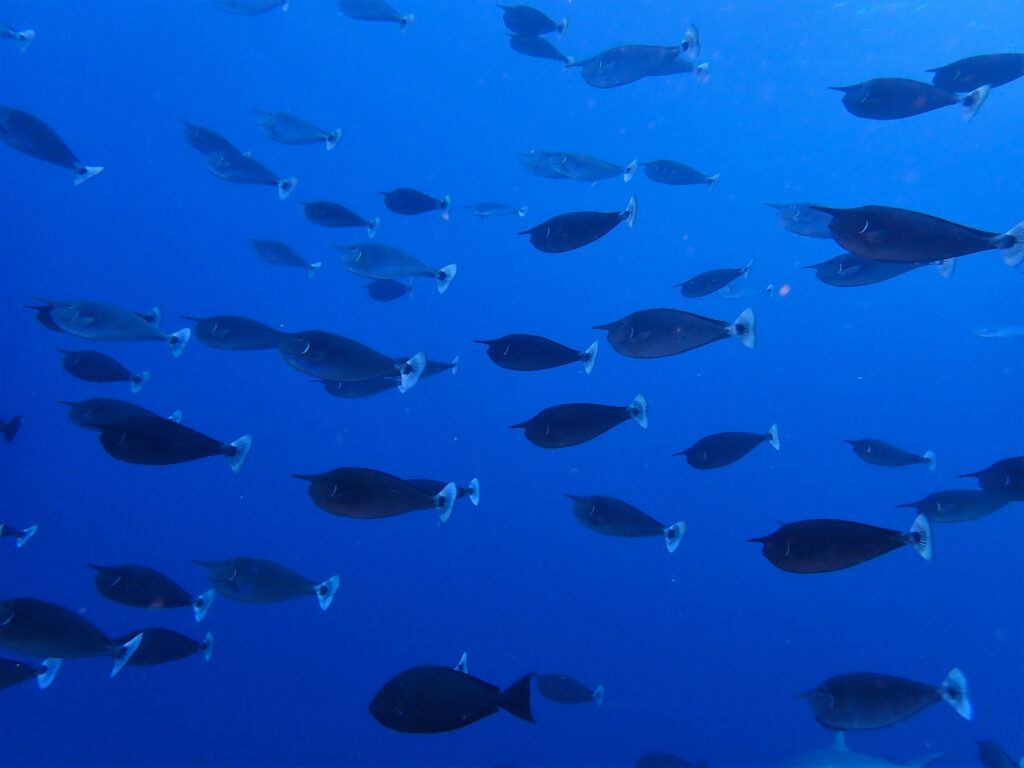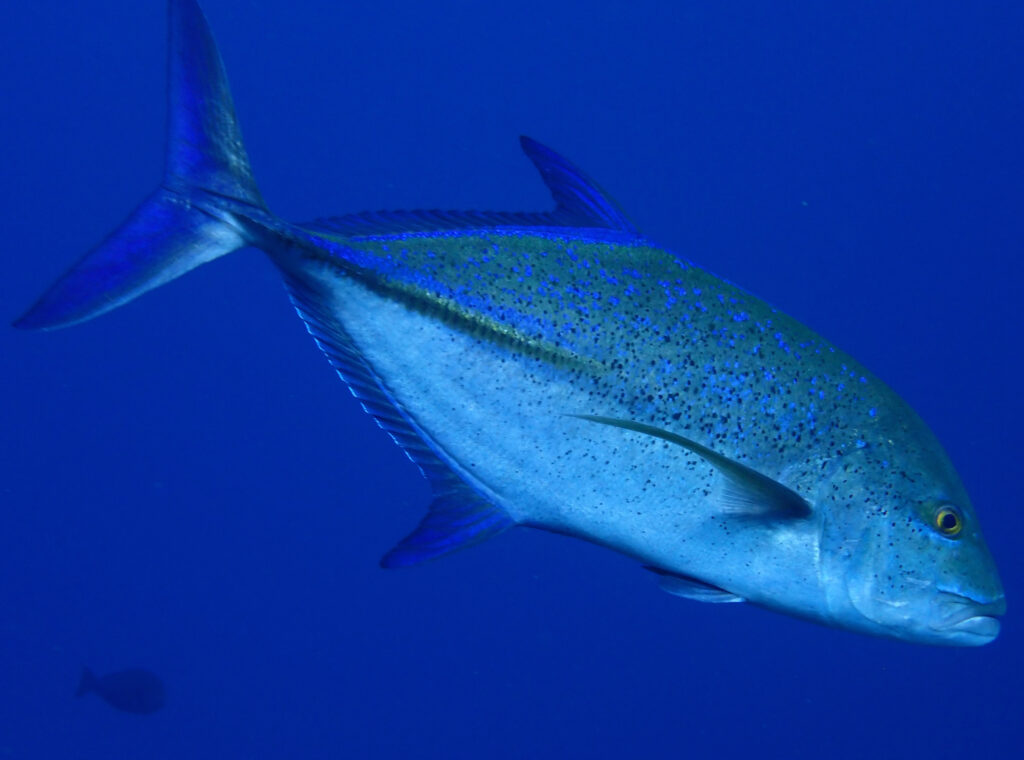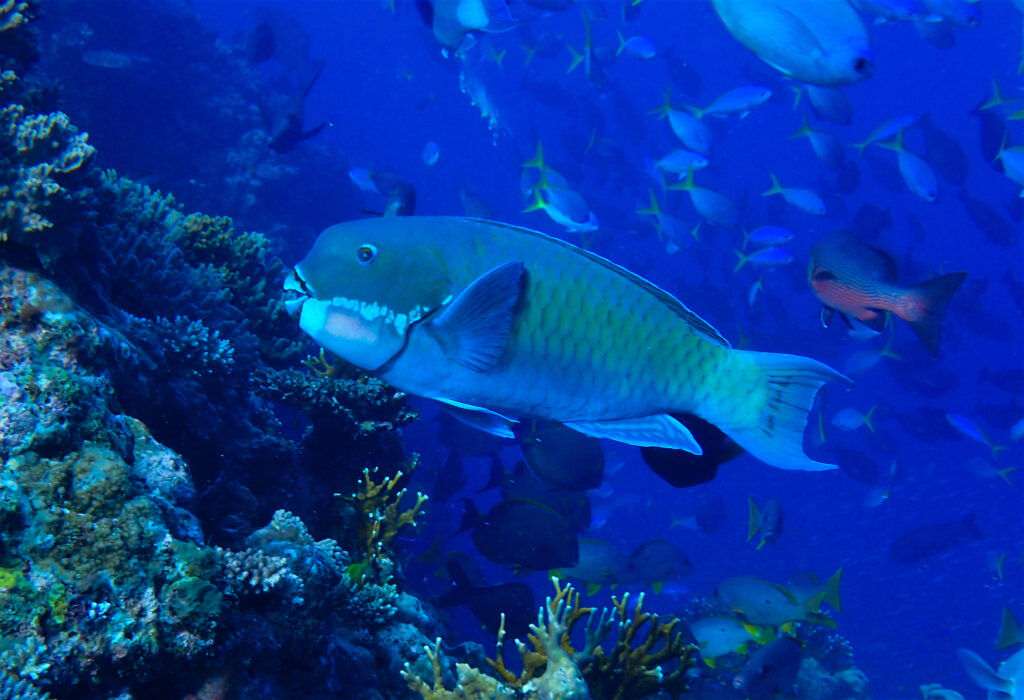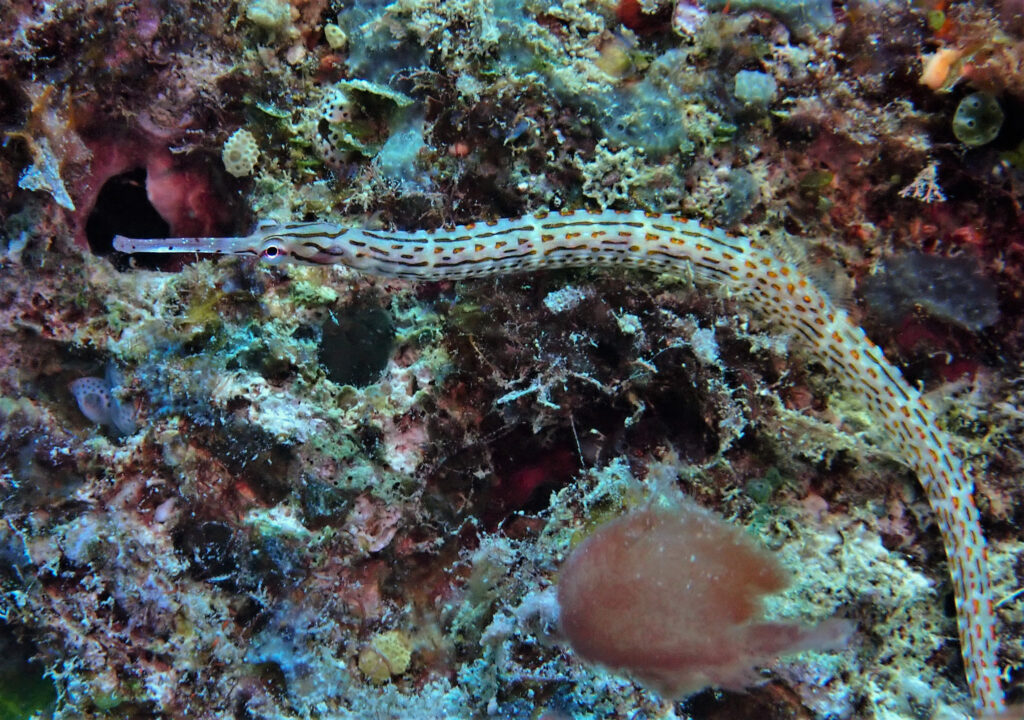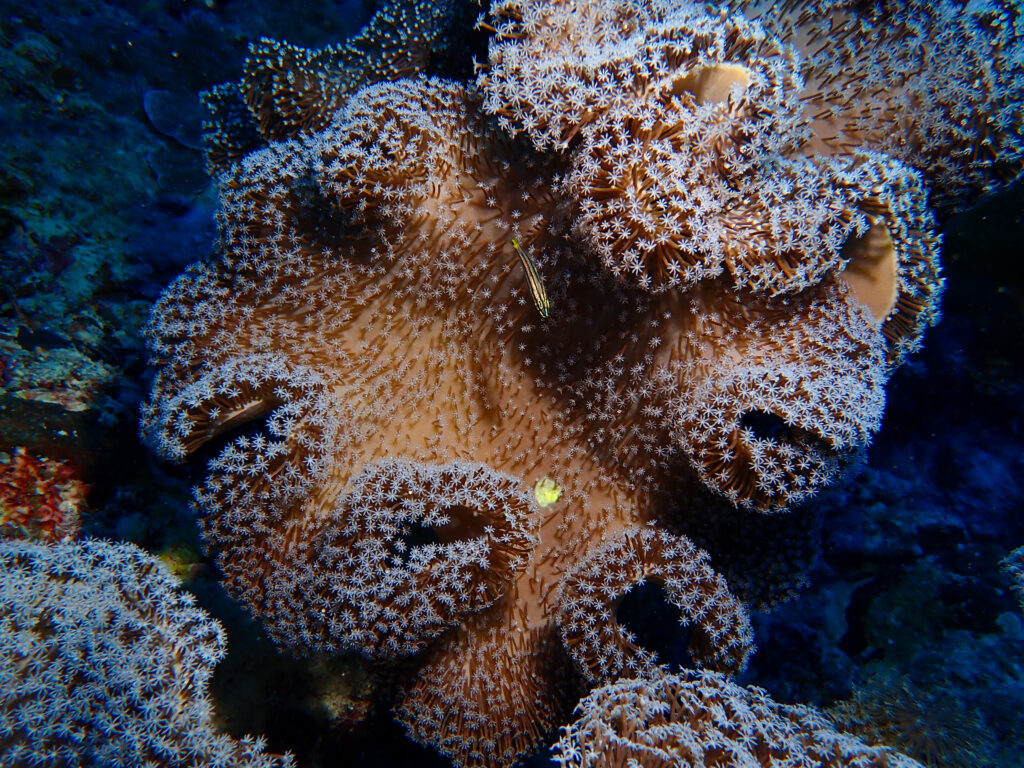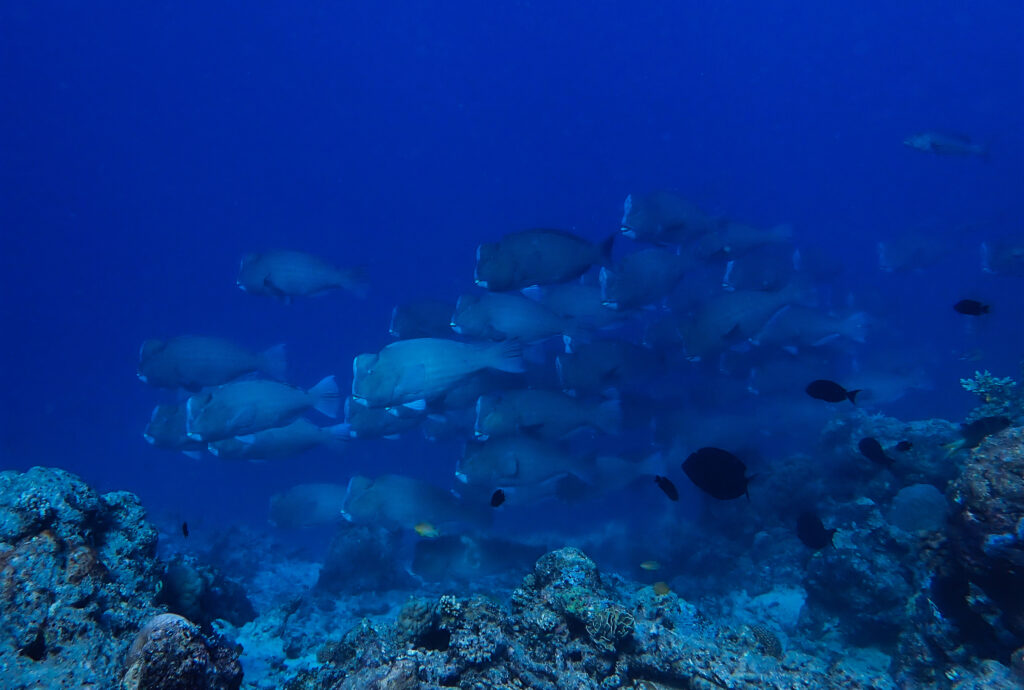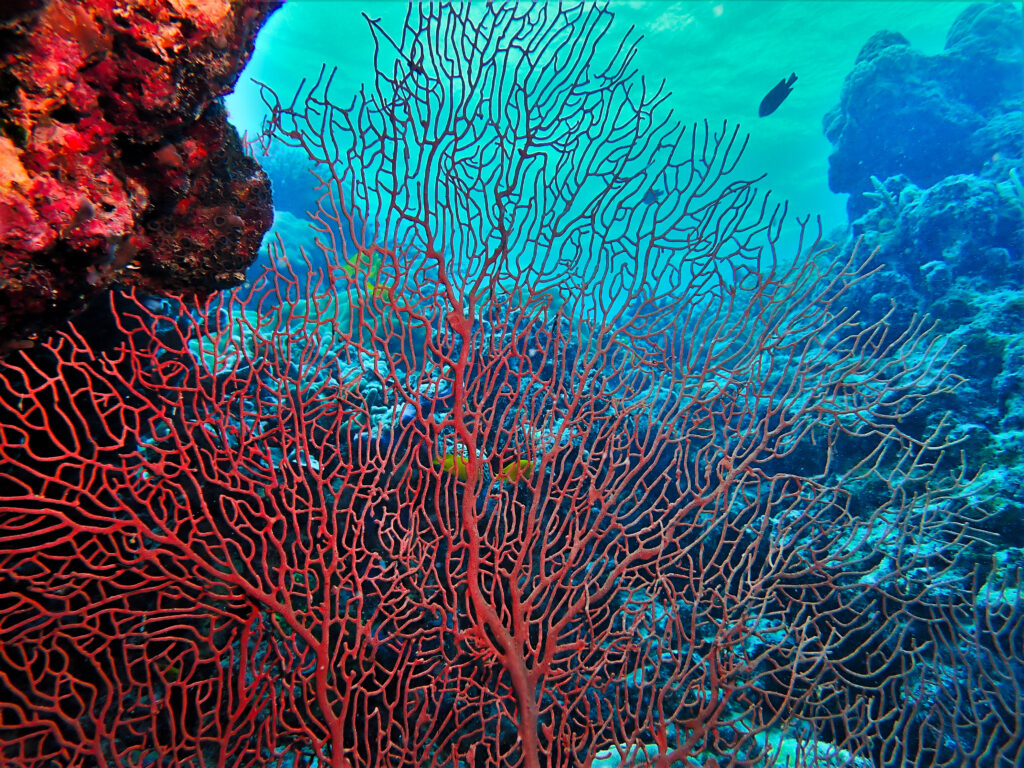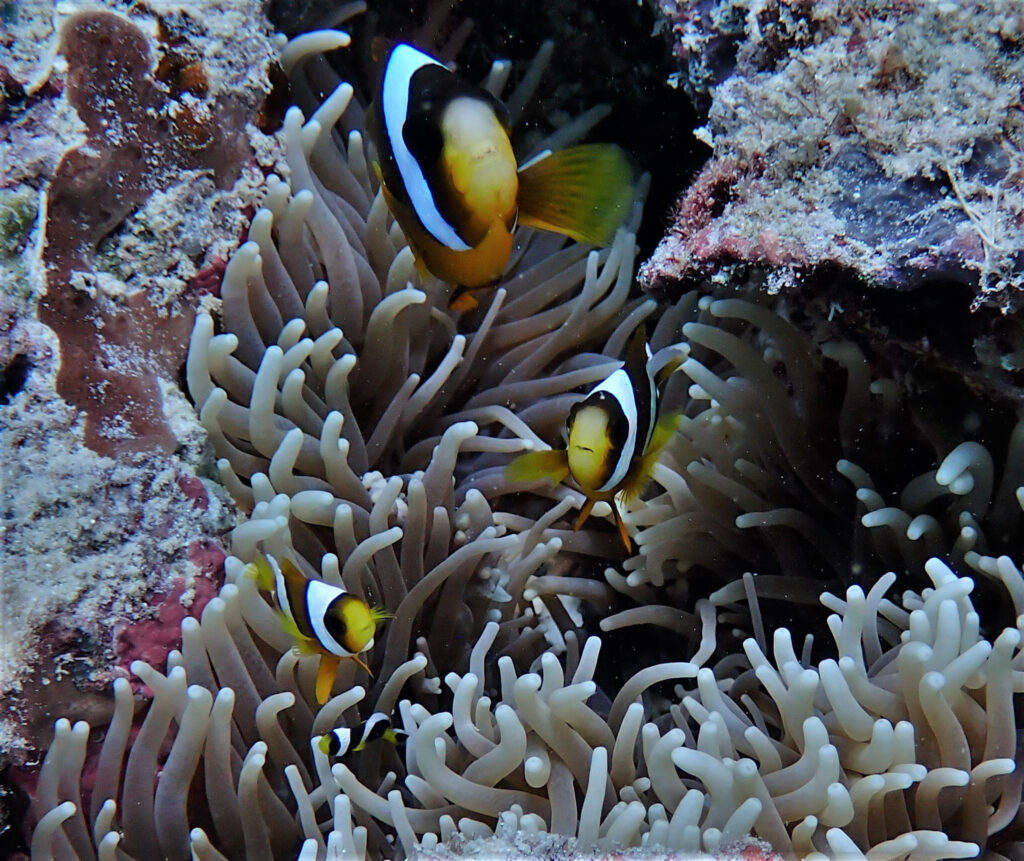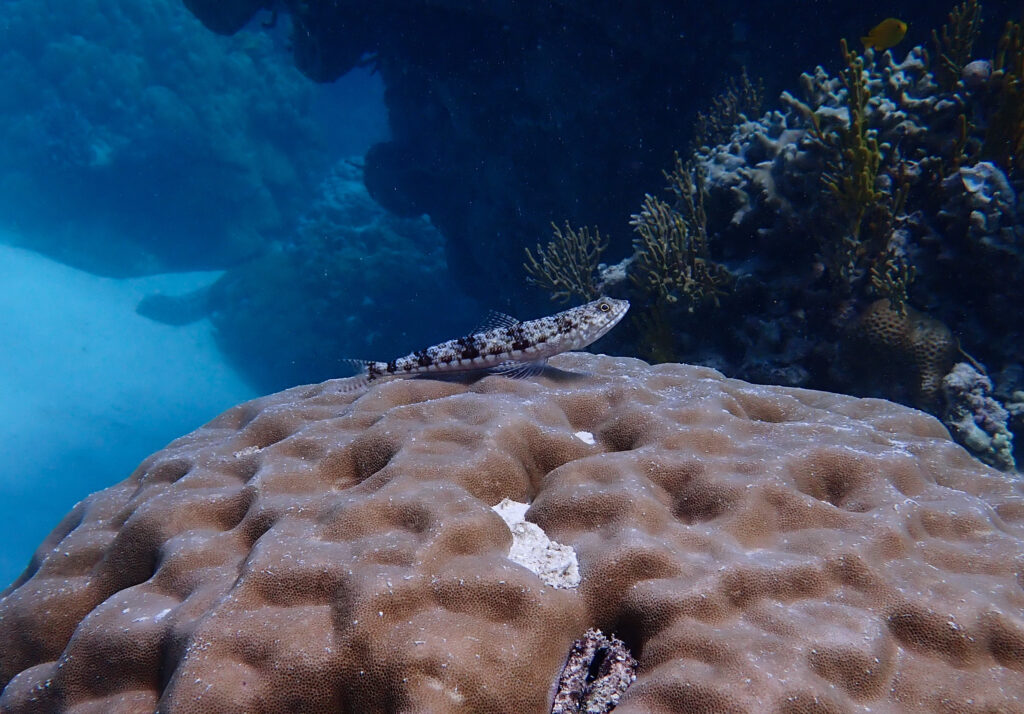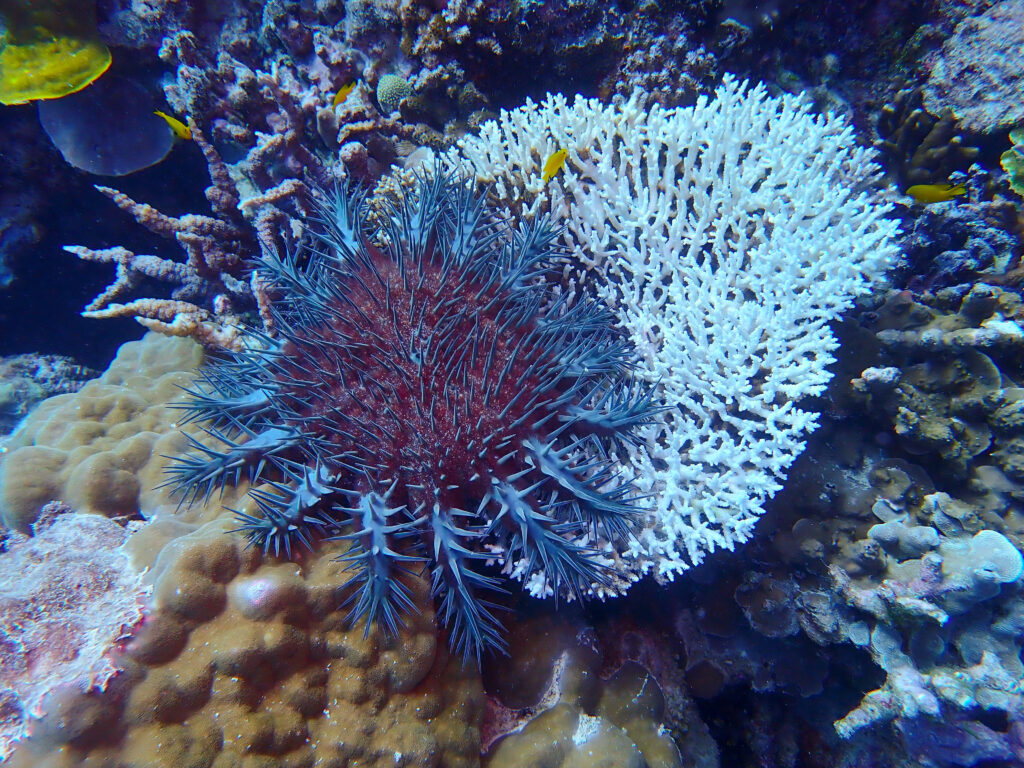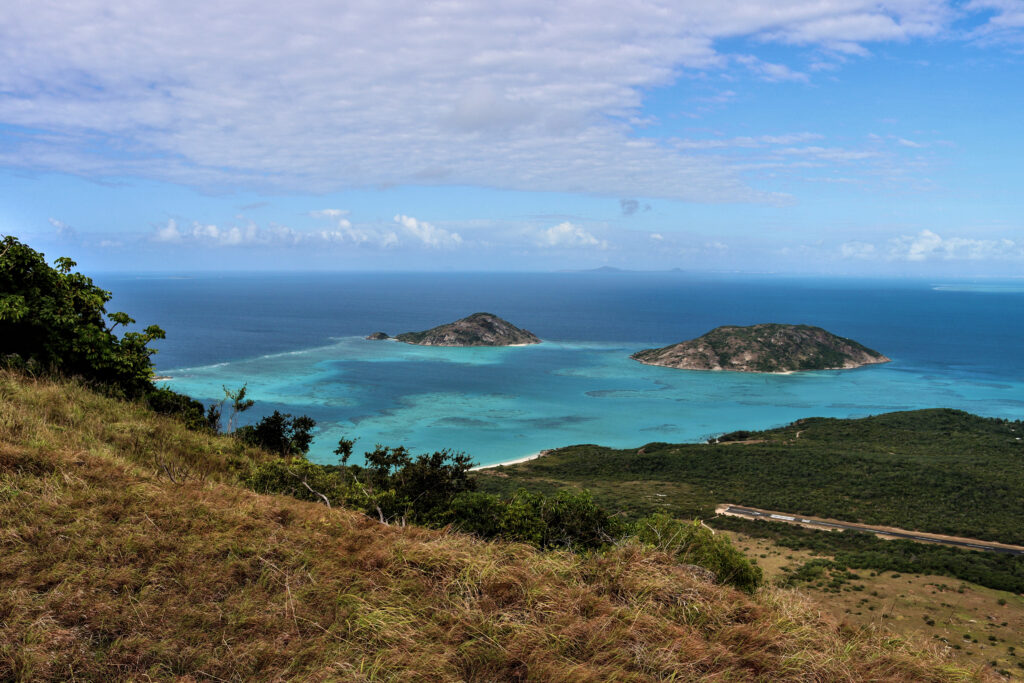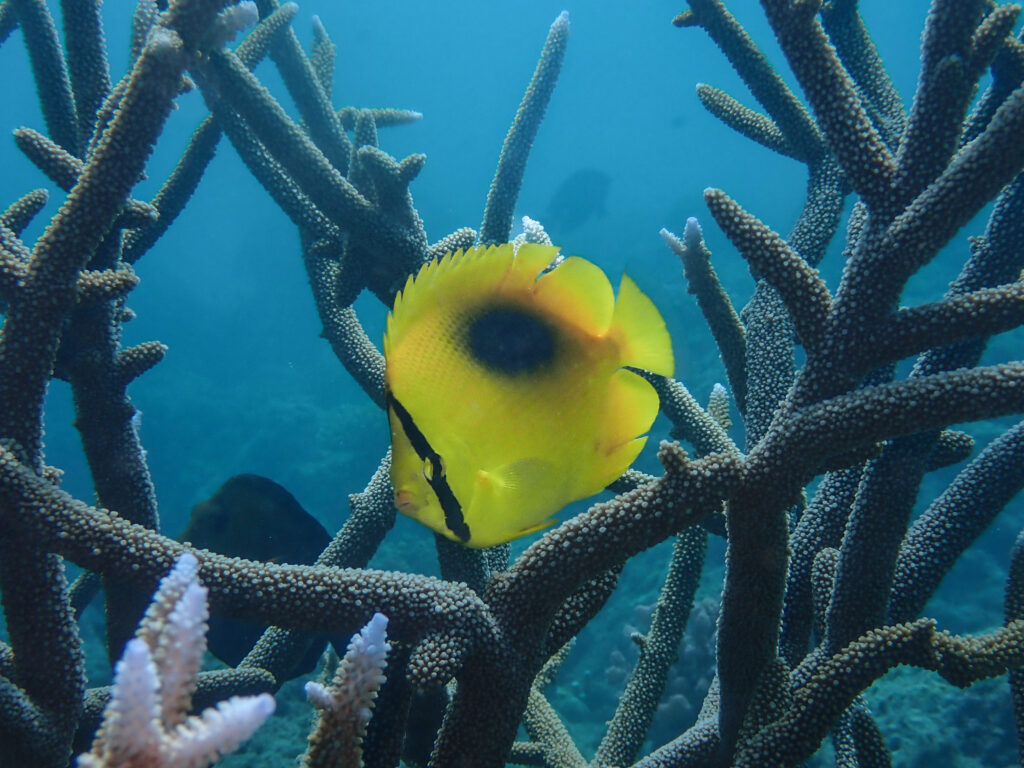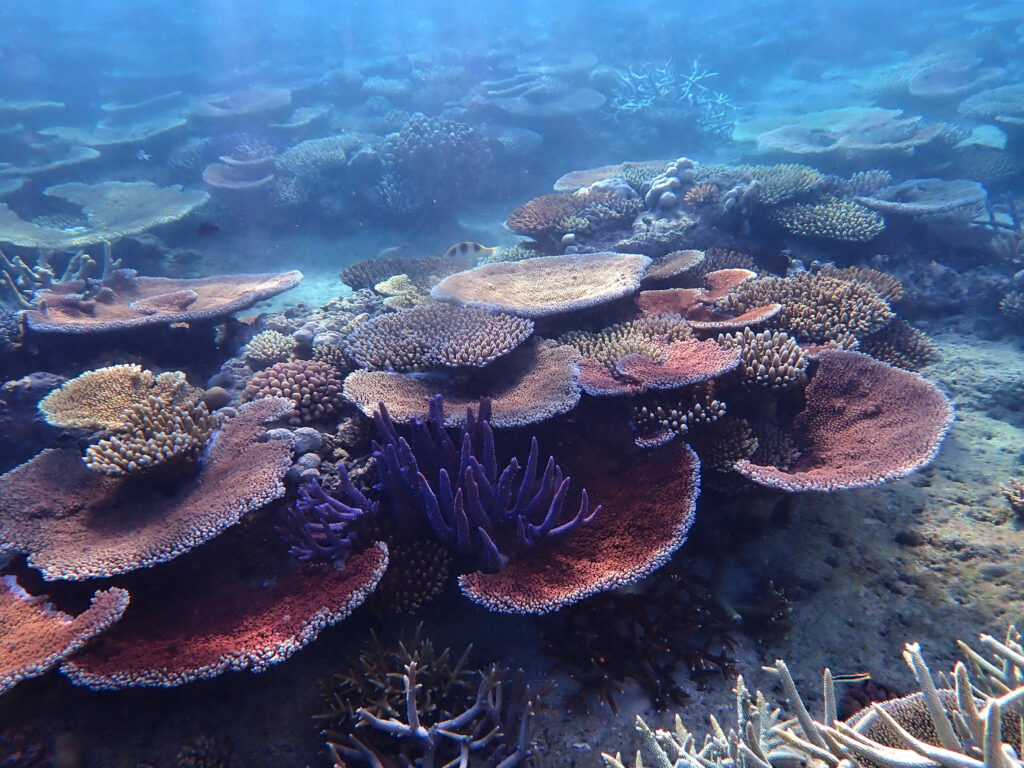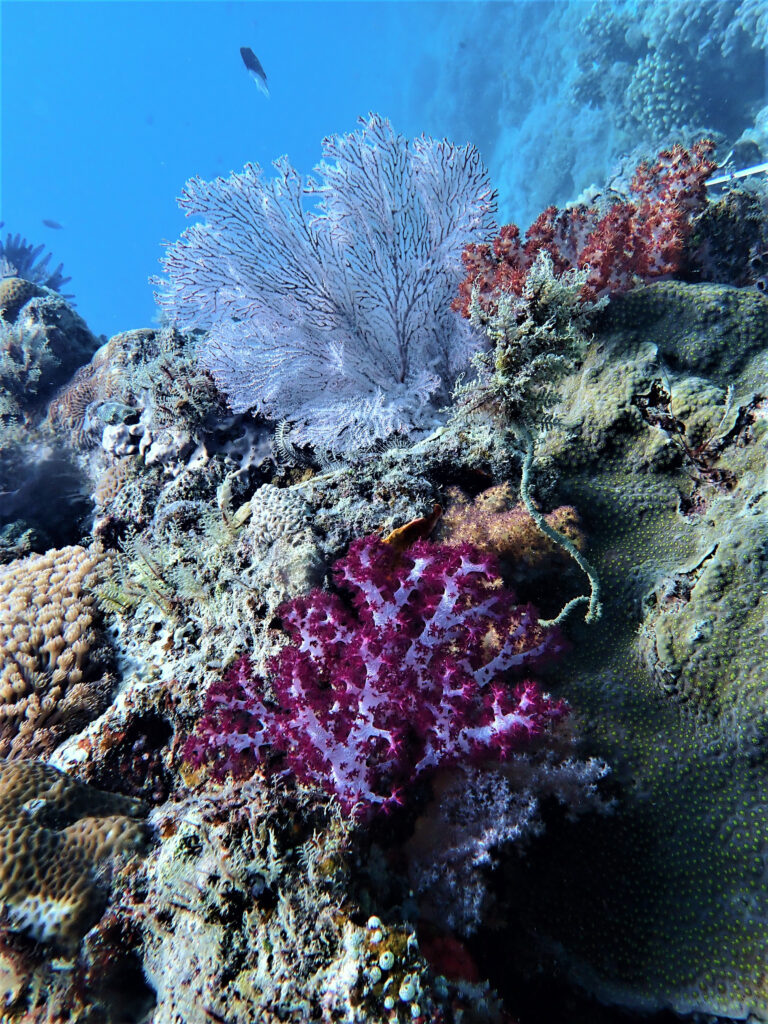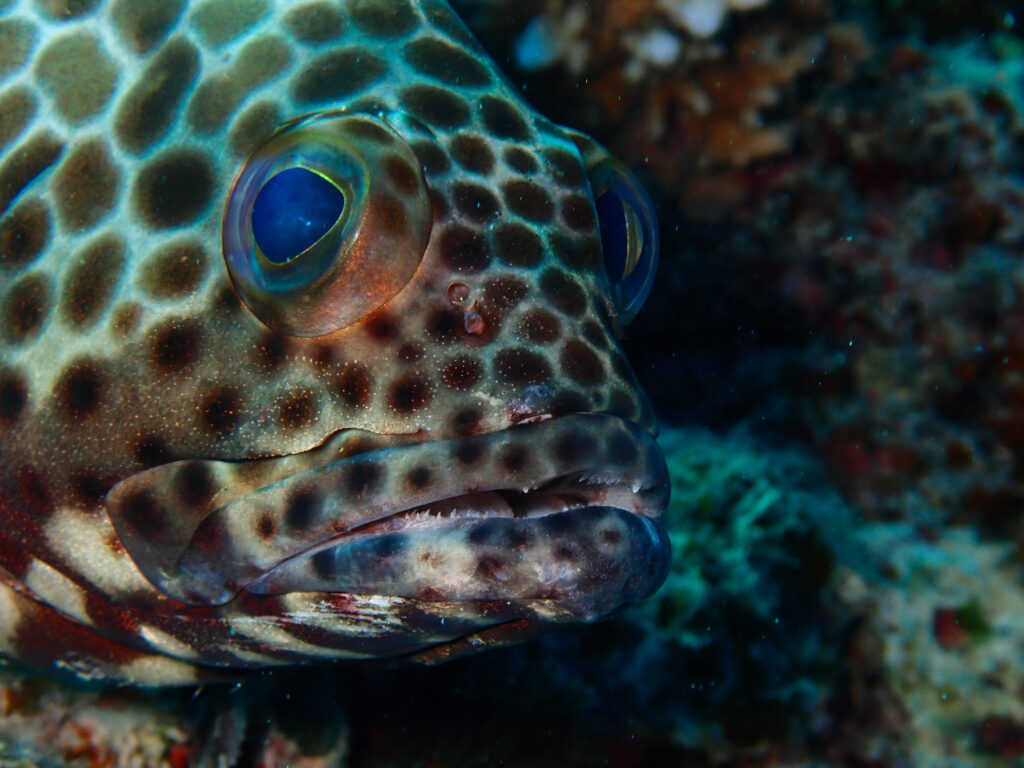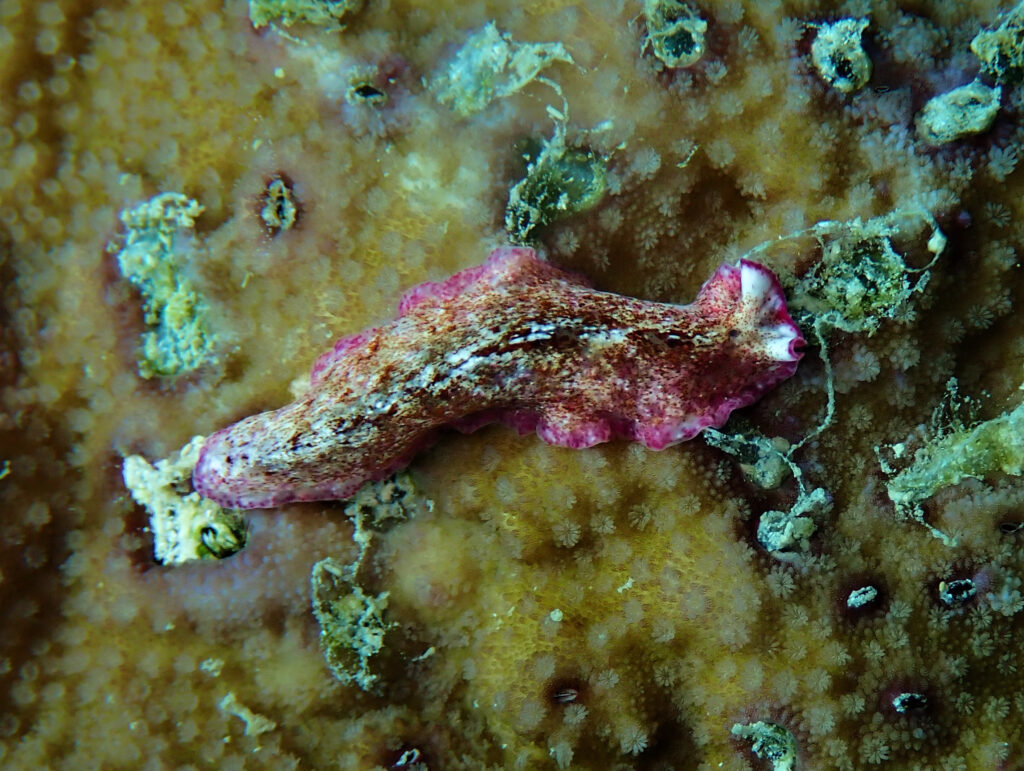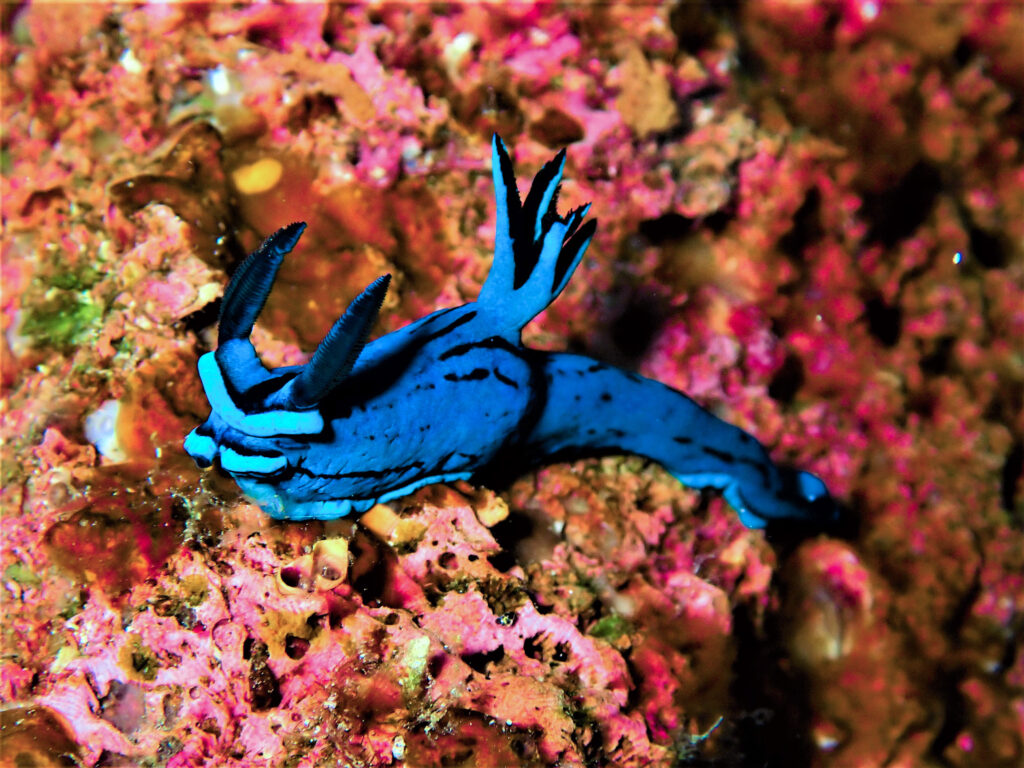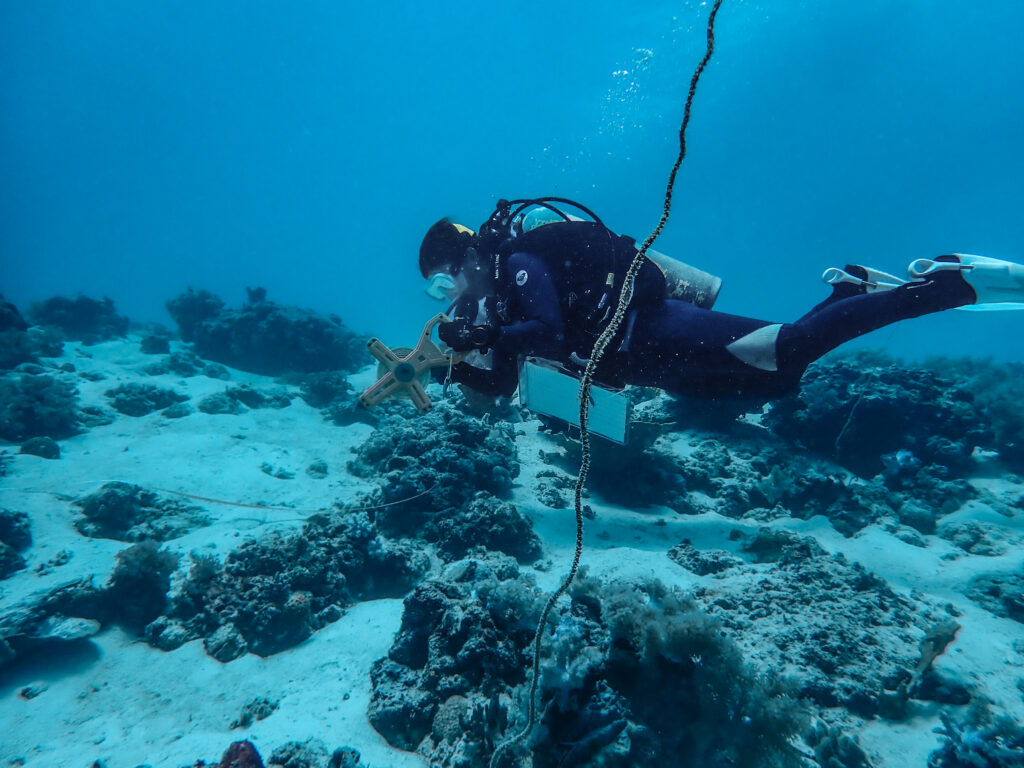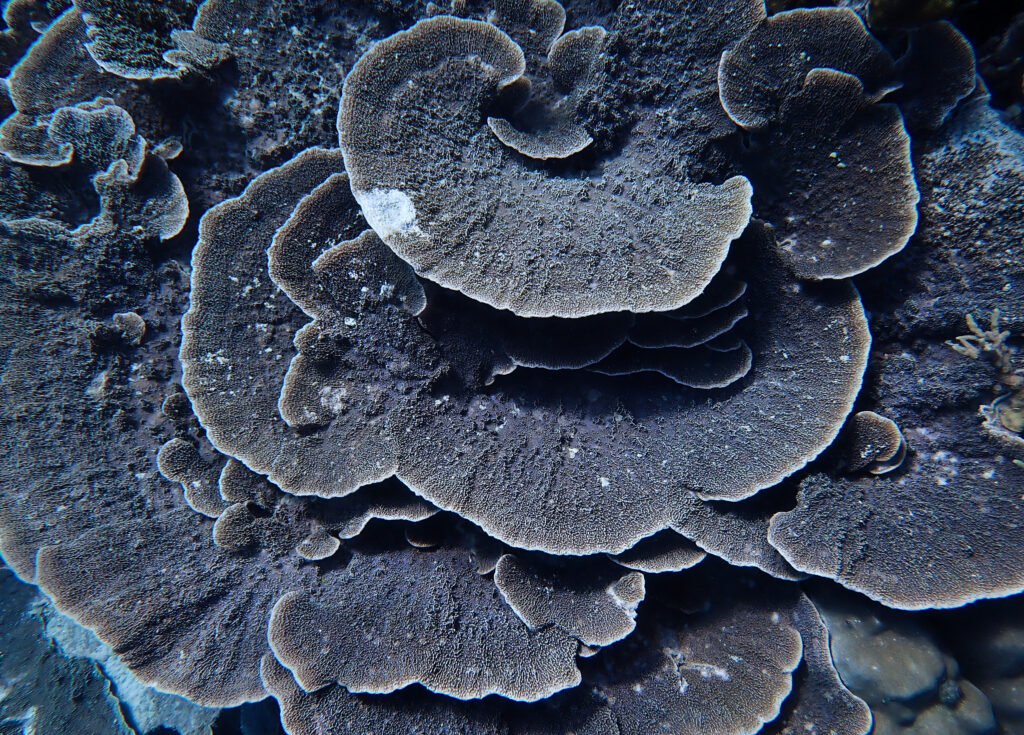On July 15th 2023 Melita was moored in Cairns as Graham Edgar and Kirsty Whitman re-stocked supplies for the second leg of Melita's lap of Australia – all the way the tip of Cape York (and a little bit further)! Cassie Nolan and Lizzi Oh met them that same evening, and the team set sail the following morning with a beautiful sunrise and some choppy conditions. The forecast looked to be 20-26kts of South Easterly winds for as long as the models predicted, which was not a dreamy prospect, but typical of the trade winds at that time of year.
The plan was to dive as many RLS sites in the Great Barrier Reef as practicable, and if the forecast was good enough, perhaps venture out into the clear blue waters of the Coral Sea. This didn’t really narrow it down much, since RLS has over 180 sites spread between the ports of Cairns and Thursday Island! Would we venture out to Osprey, Ashmore, Boot or Bougainville reefs in the Coral Sea – with their clear blue waters, drop offs and relatively fewer species per transect, or stay in the calmer but incredibly diverse reefs of the Great Barrier Reef, to see some amazing corals and hone our survey and species ID skills even more? Well, it turned out that the wind and swell stayed true to the forecast; great for sailing north, but not out to the Coral Sea. A species jamboree it was to be! Overall, we completed 85 surveys at 44 sites over the next 15 days. We even ducked up to Seven Reefs in the Torres Strait before coming into port at Thursday Island!
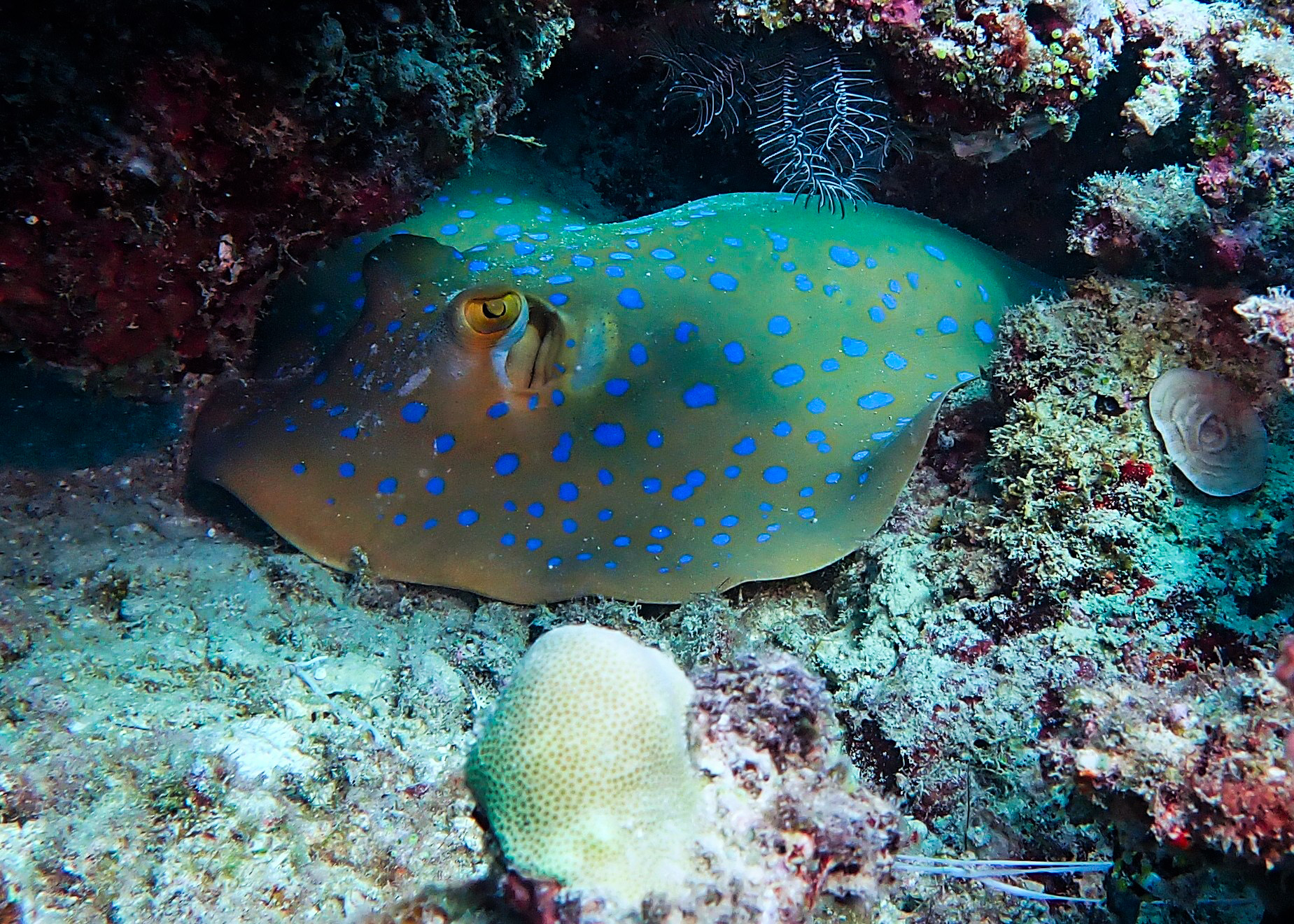
Michaelmas Cay and Agincourt Reefs
On the first day of sailing, the team stopped in around lunchtime at Michaelmas Cay around 25nm from Cairns for our first dive. We completed a few sites here seeing many species from families Pomacentridae and Labridae on Method 1 surveys. The learning curve was steep for Lizzi and Cassie, with such a diverse array of fish and invertebrates to count compared to the temperate reefs they work in at home. Luckily with the pre-trip study, some great ID resources, invaluable help from gurus Graham and Kirsty, and hours of pouring over photos, everyone managed to get their data entered. Over the next three days we sailed along the outer edge of the Great Barrier Reef towards Lizard Island, stopping at Agincourt Reefs to survey four sites. Agincourt is regarded as one of the best dive sites to visit from Port Douglas, located 72km North East of Port Douglas itself. The reefs were beautiful and dominated by a mixture of big round Porites bommies, beautifully delicate branching Acropora species, plate corals and fire corals, and there were even some beautiful overhangs dotted with gorgonian fans. There were plenty of cryptic fish to keep Cassie entertained, and plenty of Pomacentrids to perplex Lizzi! On average, divers were seeing between 100-140 species per transect. We surveyed existing sites, and established some new sites along the way.
Jiigurru/ Lizard Island
After six days at sea, we reached Jiigurru/Lizard Island in the early evening, finally escaping the wind and swell. To have a couple of nights of tranquility in a sheltered bay of the magical Lizard Island was a reprieve for the crew, so far having only moored around submerged reefs and small cays. We dropped anchor in the sheltered waters of Watsons Bay under 'Cook’s Look' hill and enjoyed some beautiful dives over the next three days, as well as a bit of sightseeing on land. In the back-to-back bleaching events of 2016/17, a high percentage of corals experienced bleaching, and of these many faced partial or total mortality (Read more HERE). Kirsty had visited Lizard Island in 2020 and witnessed some of these impacts, as well as little bit of coral recovery and some recruitment. This visit, she was pleased to see further coral recovery, recruitment and a great diversity of life at most of the sites we surveyed.
The shallow reef at Mermaid Cove was spectacular, and a memorable highlight for Lizzi and Kirsty. Blown away by the amazing healthy corals decorating the shallow reef on our swim out to the drop off, we took some extra time swimming around just appreciating the beauty of the area. After our first dive, we bumped into one of the directors of the research station, Lyle, who got chatting about Lizard Island, its reefs, the impacts of the bleaching events, and how the corals had recovered at some sites. He had snorkelers with him and said it was his favorite spot to take guests, and you can see why in the photo gallery below. Lyle invited the Melita crew over for a BBQ one evening where we meet Anne, the co-director of the research station, as well as members from the Australian Museum. It was a lovely night at the research station, on the beach under the stars and palm trees, with great conversation.
Another highlight was the dive at Cobia Hole: a lone bommie at about 16-18m depth with a huge biomass of larger fish species as well many as cryptic fish. We were greeted by huge swirling schools, with Kirsty spotting on her side of the transect alone: 130 bigeye trevally (Caranx sexfasciatus), 40 yellowspotted trevally (Carangoides fulvoguttatus), 10 golden trevally (Gnathanodon speciosus), 150 brownstripe snapper (Lutjanus vitta), 20 slate sweetlips (Diagramma labiosum) and many more. Longfin bat fish (Platax teira) aggregated near the various overhangs and arched reef formations. The views both underwater and on land at Lizard Island were breath-taking, and although after a few days we were sad to leave, we were excited to explore more of the Great Barrier Reef.
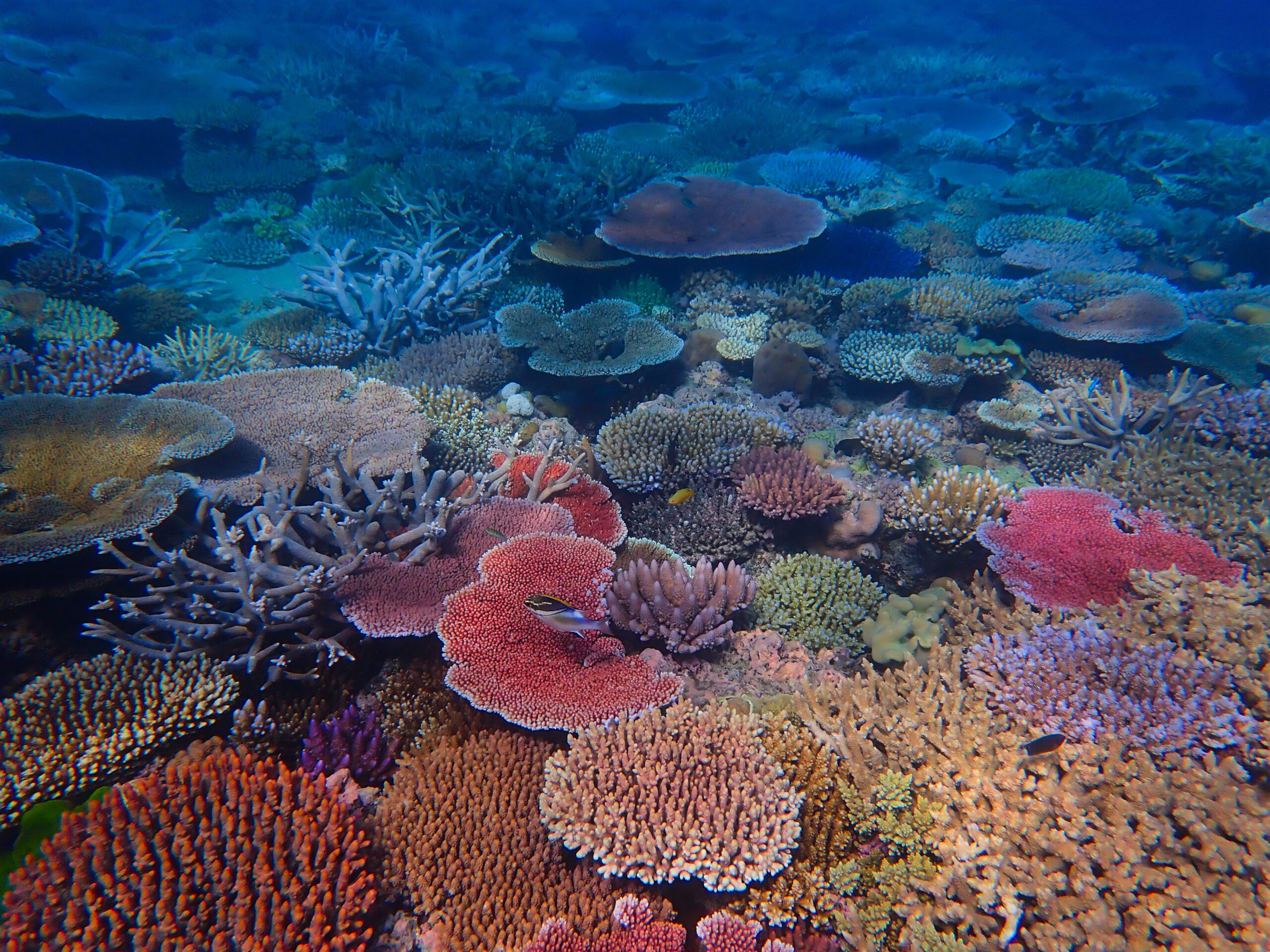
Surprise Reef, Tydeman Reef, Crocodile Bommie and Shark Reef
After some ‘rest’ we trekked on north, knowing we had a long way to go and lots of reefs to visit over the next 9 days. We stopped off at Surprise Reef, where Lizzi saw a surprisingly large aggregation of paddletail snapper (Lutjanus gibbus). The next morning there was little tidal current and wind so we decided to visit the exposed outer reef for a dive, and we were in for a treat! At Eve's Reef, we were greeted by a little grey reef shark (Carcharhinus amblyrhynchos), swimming up from depth to say hello. The reef was a stunning drop-off where a current rushed by. It was full of fish life, with big schools synchronizing their movements as if going about their day in a scene from Finding Nemo. We spotted swaths of bluefin trevally (Caranx melampygus), rainbow runners (Elagatis bipinnulata), walls of unicorn fish (Naso spp.), and so much more!!! Grey reef sharks, white tips (Triaenodon obesus) and silvertips (Carcharhinus albimarginatus) cruised in close to say g'day. We also encountered a large white spotted eagle ray (Aetobatus ocellatus) gracefully swimming past. On each side of the transect for Method 1 surveys, there were around 90 species of fish!! On a high, we sailed on to Tydeman reef and completed another six transects that day. At Tydeman Reef, on a very shallow survey at mid-afternoon, the sunlight hit water to cast a rainbow over the reef and its creatures, like the reticulated pipefish (Corythoichthys conspicillatus) pictured below, photographed by Kirsty in its rainbow best! Over the next two days sailing toward Forbes Island, we dived at 'Crocodile Bommie' and 'Shark Reef', where there was a curious sea snake and a beautiful big school of hump-head parrot fish (Bolbometopon muricatum) off-transect. The team enjoyed fresh coconuts and a beer on sunset!
Wuthara/Forbes Island out to Waibene/Torres Strait
We found shelter at Wuthara/Forbes Island for two days, and although the visibility was slightly less stunning, a great time was had. With three more diving days to go, we sailed swiftly past the northern tip of Australia into the Torres Strait to re-survey 'Seven Reefs', where Graham had dived in 2020 and 2021 with fond memories, as well as sites we dubbed 'Sixth Reef' and 'Eighth Reef'. Seven Reefs is a collection of reefs approximately 425 nm north of Cairns and 84 nm east of Waibene/Thursday Island. Coral cover and diversity was high and all of our favorite fish and invertebrates were present. A very memorable highlight at Sevens was seeing a bull shark (Carcharhinus leucas) on-transect. Lizzi and Kirsty were out on an early morning dive amongst beautiful coral gardens and large scattered bommies, when Kirsty looked up from her survey slate to see a 3m bull shark crossing her transect about 5 meters away. She swore its beady eye checked her out. The shark continued on its way for about 50m before turning 180 degrees and swimming back towards Kirsty quite quickly. Startled, Kirsty exhaled heavily, and her bubbles probably scared the shark off. A little bit (okay.. very) shaken, she and Lizzi reeled in the transect, got back on the boat, had a tea and a tim-tam and waited for the nerves to settle. They then jumped back in, and picked up the survey where they left off! How's that for commitment to data collection?
Finally the team headed back South West to Waibene/Thursday Island. It was bittersweet to end a great trip. In total, we spent two and a half weeks at sea surveying some beautiful reefs, watching the ocean and all its changing colours, and appreciating many sunrises and sunsets. After all the sailing, diving, and data entry we were a bit tired and looking forward to arriving at the next destination. Sailing into the Torres Strait was magic. The wind was against the tide, creating beautiful teal waves as we found ourselves surrounded by tropical islands and civilisation once more. On this leg we sailed approximately 550 nm, enjoyed some beautiful sites, and counted a lot of tropical fish and invertebrates. We spent a day helping to re-stock the boat and leave it ship shape for the next crew – a full change of personnel, apart from Kirsty who would call Melita home most of the way around the country.
Stay tuned for more tales as RLSers hop aboard for the subsequent legs of the journey, and a huge thanks to Graham Edgar for facilitating many surveys along the way as Melita circumnavigates Australia.
